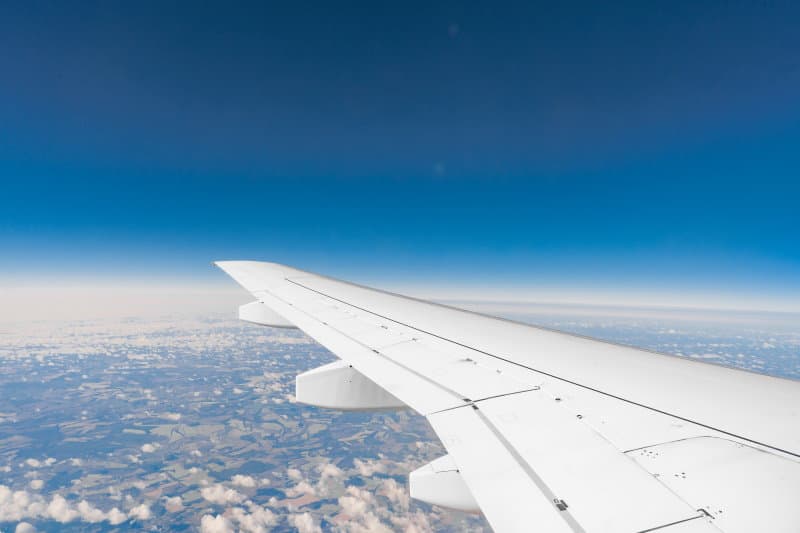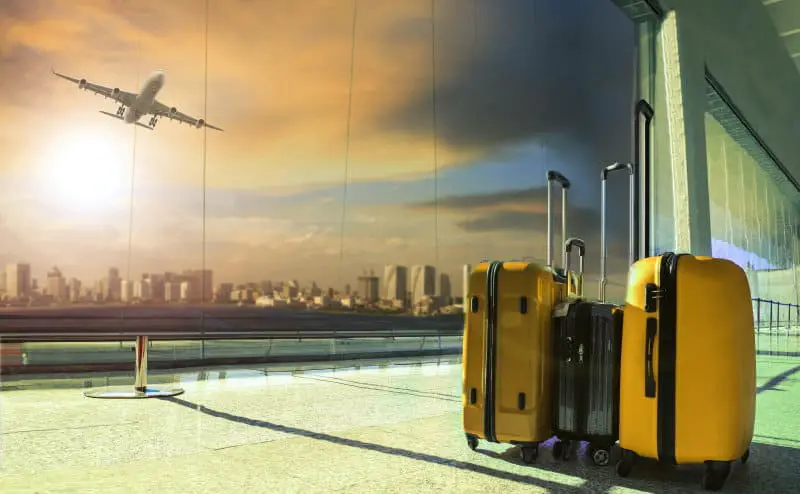If you fly more frequently, you should be concerned about the EMF measures to protect yourself. EMF from the cockpit, aircraft engine, inflight Wi-Fi, and all electronic devices from the passengers expose you to high levels of EMF radiation.
Not to mention the effects of the Faraday cage from the metal body of the airplane that constrains all electromagnetic signals inside the aircraft. The low levels of cosmic radiation penetrating the aircraft windows also increase your risk of exposure on long flights.
Many EMF protection devices are on the market, but can you fly with EMF protection?
Let’s find out!
Can you fly with EMF protection?
A plane’s interior is riddled with EMFs, from the cockpit and communication systems to the jet engines and electrical wiring and sensors to electrostatic electricity in the hull, not to mention the gadgets of other passengers and crew members. Due to the Faraday Cage Effect, EMF emissions are increased in an aircraft, making exposure worse.
Although lightning strikes are deflected by a plane’s walls made of metal mesh, there are minor gaps in the Faraday cage due to the antennae and the windows, making it less than ideal for protection.
In the event of a lightning strike on a plane, the charge is conducted along the plane’s exterior, discharging and reaching the ground without damaging the aircraft’s occupants or equipment, which is well shielded. As the emissions cannot completely depart, being enclosed in this cage merely amplifies the impacts of EMF radiation.
So, is there anything you can do to increase protection from EMF radiation when flying? And are you wondering why you need EMF protection?
The answer to both is: yes. Let’s read more.
Why do you need EMF Protection?

Air travel can be incredible for the soul, but it is taxing on your physical health. That’s why you hear people say they have jet lag. When flying, your body tries to adjust to the new time zone and the electromagnetic fields and toxins in the environment. As a result, you may experience fatigue after your flight.
Additional electrical infrastructure inflight brings about flight convenience and exposes you to high levels of EMF radiation.
When flying, a major concern is particle radiation, including protons, neutrons, and electrons. This type of space radiation has not only an impact on your health but also the electronics on the aircraft.
The build-up of quick bursts of energy from cosmic rays or solar particles can increase radiation doses if exposed for more extended periods. The side effects may not be immediate, but they can cause adverse effects with time.
Though the exposure is high while flying, you don’t have to stop flying.
Recently, there have been a lot of EMF protection solutions that help you minimize the risk of exposure. These EMF protection devices provide shielding solutions to combat the effects of EMF exposure.
These protective devices block electromagnetic fields in space with materials made from a conductive metal sheet or a magnetic material. This protective gear shields you from electromagnetic radiation and Radio Frequency (RF) signals.
How do you test for radiation in the air?

You can’t detect, smell, or feel radiation. For this reason, you can’t identify radioactive materials by doing a visual inspection. To solve these problems, you can use the following tools to detect ionizing radiation.
1. Bubble detector
This is a radiation detector that detects neutron levels in space. Astronauts are exposed to 30% of the neutrons in space. When the shielding of the aircraft interacts with protons in the air, they form neutrons harmful to human health.
A bubble detector contains microscopic liquid droplets that form visible bubbles when exposed to neutrons in the air. The number of bubbles created indicates the level of neutron radiation in the air.
2. Geiger-Mueller (GM) tube/Geiger counter
A Geiger counter is a standard radiation detector device that uses gas to detect radiation. When high voltage radiation interacts with the gas in the GM tube, it creates an electric pulse. Then the pulses convert into a reading on the meter.
GM tubes are often paired with a handheld survey meter to take contamination measurements. The survey instrument measures radiation exposure levels and displays the units in microrem (µrem) per hour, counts per minute, or counts per second. It can also detect alpha radioactive materials in the air, measure beta, gamma, and neutron radiation.
3. Radiation Isotope Identification Device (RIID)
The RIID detector identifies radioactive materials and can analyze the amount of energy generated by a spectrum of radiation. As a result, you can identify a radioactive material that emits radiation. When the detector passes near a radioactive material, it sounds an alarm to alert you.
4. Personal radiation detector (PRD)
This gamma and neutron detector sends an alarm whenever you go through high-level radiation areas. PRD is a wearable device that displays the intensity of radiation on a scale from 0 to 9. You can also use the device to identify the radiation source and indicate the type of radioactive material present.
How to reduce radiation exposure before boarding
A study carried out by the University of California found that backscatter scanners increase cancer risk. From the study, passing through the backscatter scanner increases your risk by 0.000015%. However, in 2011, the European Union banned backscatter scanners in European airports.
The millimeter-wave technology replaces the backscatter technology to lower the health concerns of backscattering scanners to citizens. Although millimeter-wave scanners emit radiation, you’re subjected to a smaller dosage within a short time, so you don’t have to worry about the inherent dangers resulting from the exposure.
A study conducted at LAX airport by the American Association of Physicists in Medicine shows that the amount of radiation emitted is equivalent to the amount absorbed after 1.8 minutes. So, for you to receive the maximum standard year dose, you have to do more than 22,500 scans each year.
You should worry more about the radio waves from the Wi-Fi router and the connected cell phone devices around you.
To reduce your exposure in the airport, you better find an isolated section and sit there.
Conclusion
With the increasing dangers of EMF everywhere you go, you may get overwhelmed on how to go about EMF protection.
EMF protection devices/fabrics play a significant role in reducing your exposure while flying. Some of these protection materials detoxify your blood and restore your body balance. For example, you can invest in suitable anti-EMF protective clothing to reduce exposure.
Look at my detailed article on the best EMF protection clothing on the market. Alternatively, you can use an EMF protection blanket to cover yourself while flying.


